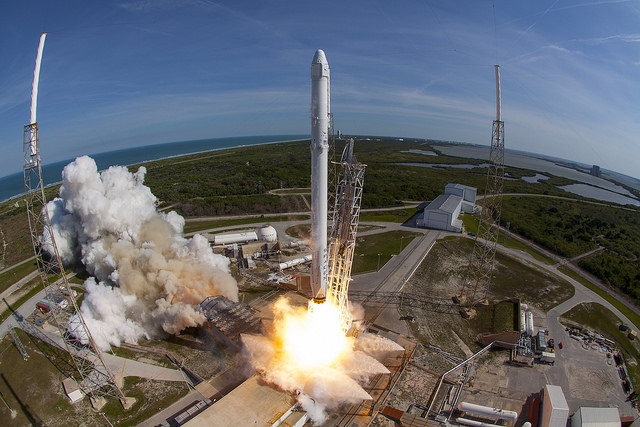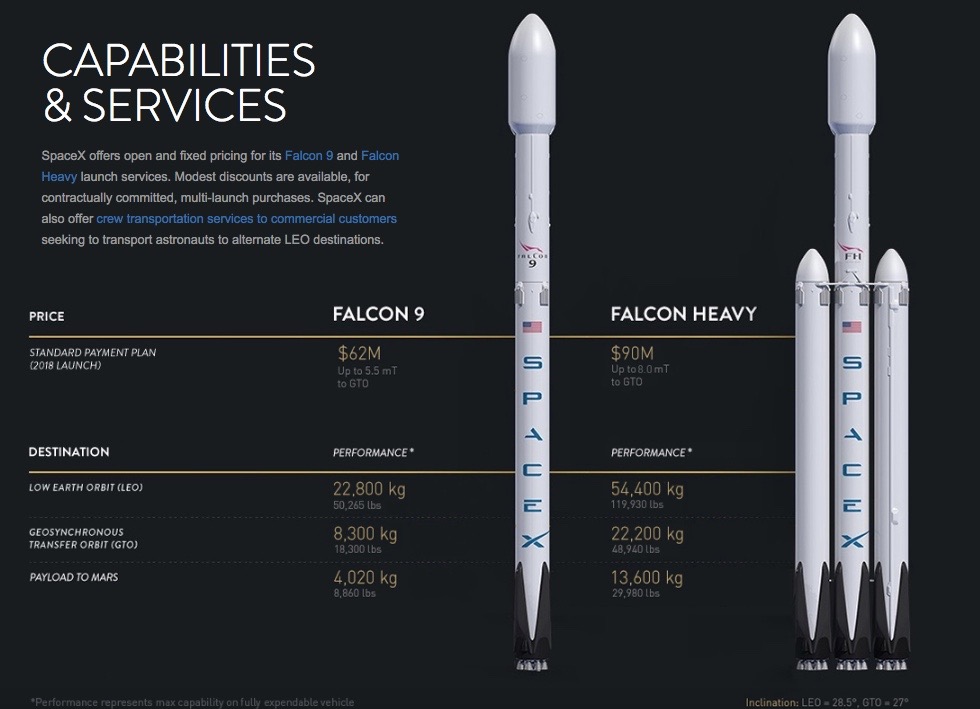
SpaceX's Falcon 9 and Falcon Heavy rockets can launch weightier spacecraft than previously thought, company officials said.
On Saturday (April 30), SpaceX founder and CEO Elon Musk announced via Twitter that the company has revised the maximum-payload capabilities of the two boosters. According to the new specifications, the Falcon 9 can actually haul 50,265 lbs. (22,800 kilograms) to low Earth orbit (LEO) and 18,300 lbs. (8,300 kg) to geosynchronous transfer orbit (GTO); the previously cited figures were 28,990 lbs. (13,150 kg) and 10,690 lbs. (4,850 kg), respectively.
The two-stage Falcon 9 — whose first stage uses an array of nine Merlin engines (hence the name) — can also send 8,860 lbs. (4,020 kg) of payload on its way to Mars, according to the new document. [The Rockets and Spaceships of SpaceX (Images)]

"No physical changes to the engine. This thrust increase is based on delta qual tests. It is just tougher than we thought," Musk tweeted on Saturday.
The in-development Falcon Heavy integrates three Falcon 9 cores, giving the huge booster 27 first-stage engines. The rocket, which is scheduled to fly for the first time in late 2016, will be able to launch 119,930 lbs. (54,400 kg) to LEO, 48,940 lbs. (22,200 kg) to GTO and 29,980 lbs. (13,600 kg) to Mars, according to the new specifications. These numbers are all slightly higher than previously published estimates.
The Mars figures are not mere fanciful inclusions. Musk has said repeatedly that he founded SpaceX primarily to make humanity a multiplanet species, and last week the company announced that it plans to launch its Dragon capsule toward the Red Planet aboard a Falcon Heavy on an uncrewed mission as early as 2018.
SpaceX is working to make both the Falcon 9 and the Falcon Heavy reusable, a breakthrough that Musk said will cut the the cost of spaceflight significantly. (Launches of the Falcon 9 currently sell for $62 million apiece, while $90 million is the going price for a Falcon Heavy liftoff.)
Get the Space.com Newsletter
Breaking space news, the latest updates on rocket launches, skywatching events and more!
The company has already twice successfully landed a Falcon 9 first stage during orbital liftoff, the first time on terra firma in December 2015, and the second time last month on a robotic ship in the Atlantic Ocean.
Reusable rockets need to carry more fuel (as well as landing legs) to come back softly to Earth, a fact that reduces their maximum-payload capabilities.
"Max-performance numbers are for expendable launches. Subtract 30 percent to 40 percent for reusable booster payload," Musk tweeted on Saturday.
Follow Mike Wall on Twitter @michaeldwall and Google+. Follow us @Spacedotcom, Facebook or Google+. Originally published on Space.com.
Join our Space Forums to keep talking space on the latest missions, night sky and more! And if you have a news tip, correction or comment, let us know at: community@space.com.

Michael Wall is a Senior Space Writer with Space.com and joined the team in 2010. He primarily covers exoplanets, spaceflight and military space, but has been known to dabble in the space art beat. His book about the search for alien life, "Out There," was published on Nov. 13, 2018. Before becoming a science writer, Michael worked as a herpetologist and wildlife biologist. He has a Ph.D. in evolutionary biology from the University of Sydney, Australia, a bachelor's degree from the University of Arizona, and a graduate certificate in science writing from the University of California, Santa Cruz. To find out what his latest project is, you can follow Michael on Twitter.









